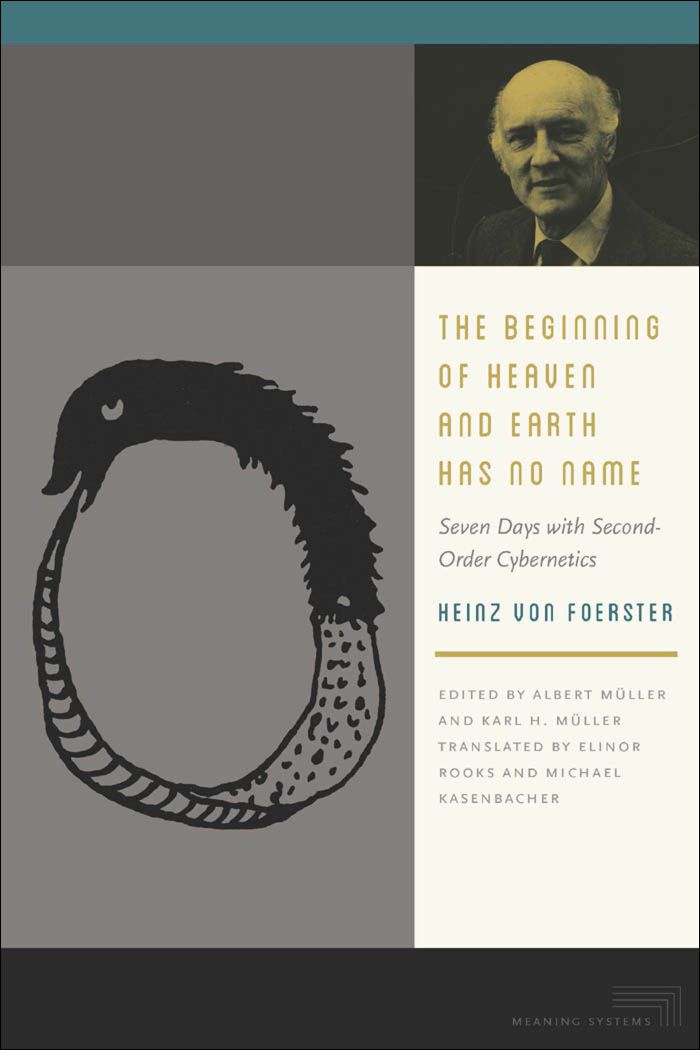Save 25% plus free shipping during our Winter Sale! Use promo code JOY2025. Expires 1/5/26.
The Beginning of Heaven and Earth Has No Name
Seven Days with Second-Order Cybernetics

This book can be opened with

Heinz von Foerster was the inventor of second-order cybernetics, which recognizes the investigator as part of the system he is investigating. The Beginning of Heaven and Earth Has No Name provides an accessible, nonmathematical, and comprehensive overview of von Foerster’s cybernetic ideas and of the philosophy latent within them. It distills concepts scattered across the lifework of this scientific polymath and influential interdisciplinarian. At the same time, as a book-length interview, it does justice to von Foerster’s élan as a speaker and improviser, his skill as a raconteur.
Developed from a week-long conversation between the editors and von Foerster near the end of his life, this work playfully engages von Foerster in developing the difference his notion of second-order cybernetics makes for topics ranging from emergence, life, order, and thermodynamics to observation, recursion, cognition, perception, memory, and communication.
The book gives an English-speaking audience a new ease of access to the rich thought and generous spirit of this remarkable and protean thinker.
Heinz Von Foerster spent most of his career seeking to understand cognition based on neurophysiology, mathematics, and philosophy. He came to a new understanding of knowledge which led to a new epistemology. What this book reveals is that after retiring from the University of Illinois, von Foerster reinterpreted his earlier professional training in physics and the sciences generally from the new perspective. The conversational structure and style of the book brilliantly gives von Foerster the opportunity to retell the story of creation by referring to all of the various branches of natural science, but with the additional insight of the new epistemology. This is a remarkable achievement which will delight any serious student of the natural sciences or of scientific writing. The scholarship that went into the conversation that the book records, both the questions and the answers, is impressive. The ideas here will be of particular interest to ambitious younger scientists looking for new lines of research.——Stuart Umpleby, George Washington University
“I know of no other such a broad and coherent statement of Foerster's essential thinking.”——Ranulph Glanville, Professor Emeritus of Architecture and Cybernetics, The Bartlett, University College London, UK
Heinz von Foerster is one of the most consequential thinkers in the history of cybernetics. Von Foerster wrote nearly two hundred professional papers, gaining renown in fields from computer science and artificial intelligence to epistemology and family therapy.
Elinor Rooks (Translator)
Elinor Rooks is a doctoral student at the University of Leeds.
Michael Kasenbacher (Translator)
Michael Kasenbacher is a social scientist and translator.

